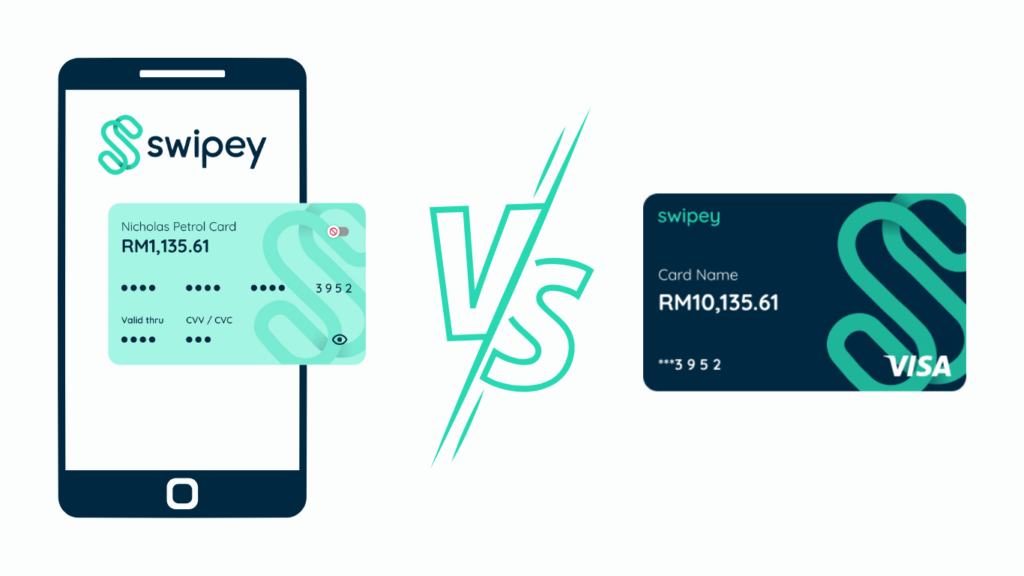The way businesses are handling payments are ever-evolving and having a virtual card is highly beneficial. However, its traditional counterpart, physical cards are still well in use. Physical cards are the traditional credit and debit cards that are issued by financial institutions, while virtual cards are digital versions of these cards that are used for online transactions. In this article, we will explore the pros and cons of physical cards and virtual cards to help you decide which one is right for your business.
What is a Physical Card?
Financial institutions issue physical cards, which are traditional credit and debit cards. These cards are made of plastic, or in some cases metal, and have a magnetic stripe or chip that stores the cardholder’s account information. People can use physical cards to make purchases at physical retail stores, withdraw cash from ATMs, and make online purchases.
Pros of using a physical card
One of the main advantages of using physical cards is that they are widely accepted by merchants. Most retailers and service providers accept physical cards as a form of payment, making it easy for businesses to make purchases and manage their expenses. Physical cards also provide a sense of security and familiarity for customers, who are accustomed to using them for transactions.
Physical cards also offer a range of rewards and benefits, such as cashback, airline miles, and discounts on purchases. These rewards can be attractive to businesses that want to save money on their expenses or earn rewards for their purchases.
Cons of using a physical card
One of the main drawbacks of physical cards is the risk of losing them or having them stolen. If someone else finds or steals a physical card, they might use it to make unauthorised purchases and compromise the cardholder’s financial security. Additionally, physical cards can get damaged, which could render them unusable.
What is a Virtual Card?
A virtual card is a digital version of a physical card that is used for online transactions. They are typically issued by financial institutions and can be used to make purchases at online retailers, pay bills, and manage expenses. Virtual cards also provide businesses with greater control over their expenses, as they can set spending limits and track transactions in real-time.
Pros of using a virtual card
One of the main advantages of virtual cards is that they offer a higher level of security than physical cards. Virtual cards generate a unique number for each transaction, which reduces the risk of fraud and unauthorized transactions. Users can generate them for a limited period or for a single transaction, making them more secure than physical cards.
Virtual cards also offer businesses greater control over their expenses. Businesses can set spending limits for each virtual card, ensuring that employees do not overspend or make unauthorised purchases. Virtual cards also provide businesses with real-time transaction tracking, allowing them to monitor their expenses more closely.
Cons of using a virtual card
Not all merchants accept virtual cards, which makes it one of the main drawbacks. While virtual cards are becoming more widely accepted, some retailers and service providers may not accept them as a form of payment. This can be a disadvantage for businesses that need to make purchases from a wide range of merchants.
Virtual cards also do not offer the same rewards and benefits as physical cards. While some virtual cards offer cashback and rewards for purchases, the rewards are often less generous than those offered by physical cards.
Physical Cards vs Virtual Cards: Which is Right for Your Business?
The choice between physical cards and virtual cards depends on the specific needs of your business. Physical cards may be the better option if you need to make purchases from physical retailers or withdraw from ATMs. Physical cards are also a good option for businesses that want to earn rewards and benefits for their purchases.
However, if your business makes a lot of online purchases or needs to manage expenses for remote employees, virtual cards may be the better option. Virtual cards offer greater security and control over expenses, making them a good choice for businesses that want to reduce the risk of fraud and unauthorised transactions.
In conclusion, both physical cards and virtual cards have their own set of pros and cons. The choice between the two depends on the specific needs of your business. By understanding the advantages and disadvantages of both physical and virtual cards, you can make an informed decision about which one is right for your business.
With Swipey, you don’t have to choose—you get the best of both worlds. Manage your expenses seamlessly with Swipey’s physical and virtual cards, designed to offer flexibility, security, and control for modern businesses. Find out how Swipey cards, both virtual and physical, can help streamline your business expenses here.




